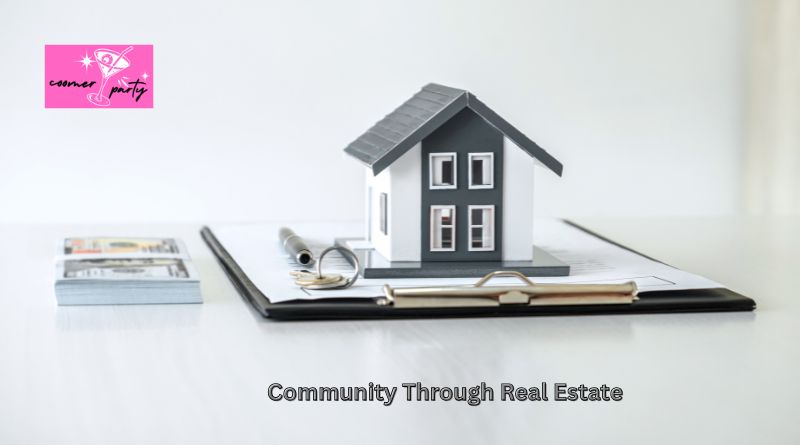Why Community Matters in Real Estate
A combination of measurable factors, such as the size of the property in square footage, the desirability and ratings of the neighborhood, and current market forecasts and trends, typically determines real estate value. However, in addition to these tangible elements, the strength, vibrancy, and overall sense of community within the neighborhood play a critical role in influencing property values. Brentwood real estate experts The Milam Group recognize the importance of these additional factors, understanding that a thriving, well-connected community can significantly enhance the attractiveness and value of properties. They consider aspects such as community engagement, local amenities, safety, school quality, and neighborhood development initiatives, which collectively contribute to the overall appeal and potential appreciation of real estate in the area.
The Role of Real Estate Professionals in Community Building
Real estate professionals play a crucial role in connecting new and existing residents by introducing them to local businesses and neighborhood leaders. They act as local ambassadors, bridging gaps between diverse groups and fostering a common identity among neighbors. Personal touches, such as introducing families to local coffee shops or community volunteer opportunities, are important. Agents can be the first friendly contact for newcomers in growing cities and suburbs, providing resources about local schools and organizing tours of neighborhood landmarks. Over time, these efforts can lead to residents assuming roles that support and strengthen the neighborhood, resulting in increased investment in the property and the broader community.
Strategies for Fostering Connection
- Host Local Events: Neighborhood social events bring people together in fun, low-pressure environments. From seasonal festivals to volunteer clean-up days and food truck nights, these gatherings create organic moments for networking and friendship. They can help foster pride in the neighborhood and often serve as a springboard for resident-led initiatives, building a cycle of ongoing engagement.
- Promote Neighborhood Associations:By encouraging involvement in neighborhood associations or homeowners’ committees, residents get a voice in community decisions, from beautification projects to rule-making processes. These associations foster transparency and collective responsibility, ensuring everyone feels invested in the neighborhood’s direction.
- Leverage Social Media: Platforms like community Facebook pages, WhatsApp groups, and neighborhood-specific forums make it easier to stay updated on local news, upcoming events, or urgent safety alerts. These spaces help integrate newcomers, facilitate information sharing, and provide a convenient place for feedback or support requests.
- Support Local Businesses: By forming partnerships with nearby merchants, communities strengthen their local economies while also creating more gathering spots for residents. Promoting “shop local” days, dining events, or pop-up markets not only supports small businesses but also makes a neighborhood feel unique and close-knit.
Success stems from combining these strategies, resulting in neighborhoods that are both resourceful and responsive to challenges and opportunities.
Benefits of Strong Community Networks
The impact of robust community ties goes beyond individual relationships. Residents in connected neighborhoods consistently report a higher degree of happiness and overall life satisfaction. According to research highlighted by Community Association Insider, active communities not only see better property maintenance and increasing home values but also enjoy improved collective problem-solving skills. For instance, challenges such as crime prevention or local beautification are approached collaboratively, leading to faster and more sustainable solutions.
There are countless real-world examples of this at play. In neighborhoods where residents host annual yard sales or block parties, people report feeling safer and more willing to invest in their properties. Business owners also benefit—community loyalty drives local traffic and creates a stable base of repeat customers. These cascading benefits reinforce the idea that a united neighborhood is more desirable to live in and visit.
Challenges and Solutions
Building these connections is rewarding, but it’s not without obstacles. People face demanding schedules, language barriers, or simply the anxiety of being the “new face.” Breaking through can be as simple as a warm welcome—delivering a personalized introduction letter, hosting an informal coffee meetup, or circulating an inclusive digital newsletter. These small efforts open the door to deeper engagement.
Once initial connections are formed, intentional follow-up makes all the difference. Continued check-ins, regular event planning, and open channels for ideas or concerns ensure momentum isn’t lost. Even neighborhoods with historically low engagement can experience transformation with just a few passionate advocates leading the way.
Technology’s Role in Modern Community Engagement
Digital tools have become indispensable for today’s communities. Community-specific websites, messaging applications, and even virtual town halls help residents stay informed and involved, regardless of their schedules. These innovations allow parents juggling work, students away at college, or shift workers to participate meaningfully in community life.
While digital platforms facilitate rapid communication and can scale easily, maintaining balance remains crucial. The warmth and trust built via face-to-face interaction are unmatched, and when combined with reliable digital infrastructure, neighborhoods become more accessible and diverse. Residents who can’t physically attend every event can still stay connected, informed, and represented.
Sustaining Community Over Time
Community building is an ongoing process that demands consistent effort as neighborhoods grow and change. Welcoming new families, marking major life milestones for residents, and maintaining regular events help communities adapt and stay strong. Offering volunteer opportunities and inviting ongoing feedback fosters an environment that values continuous improvement.
When long-time residents share their traditions with newcomers or mentor younger members, the community’s fabric gains depth and resilience. Transparent communication ensures that everyone—from renters to homeowners—feels included, fostering loyalty and positive word of mouth that attracts future residents.
Final Thoughts
The foundation of every great neighborhood is its sense of community. Whether through local leadership, imaginative events, or everyday acts of kindness, the combined efforts of individuals and real estate professionals help shape thriving places people are proud to call home. Investing in one another—socially, emotionally, and economically—ensures neighborhoods not only survive but flourish for generations to come.

